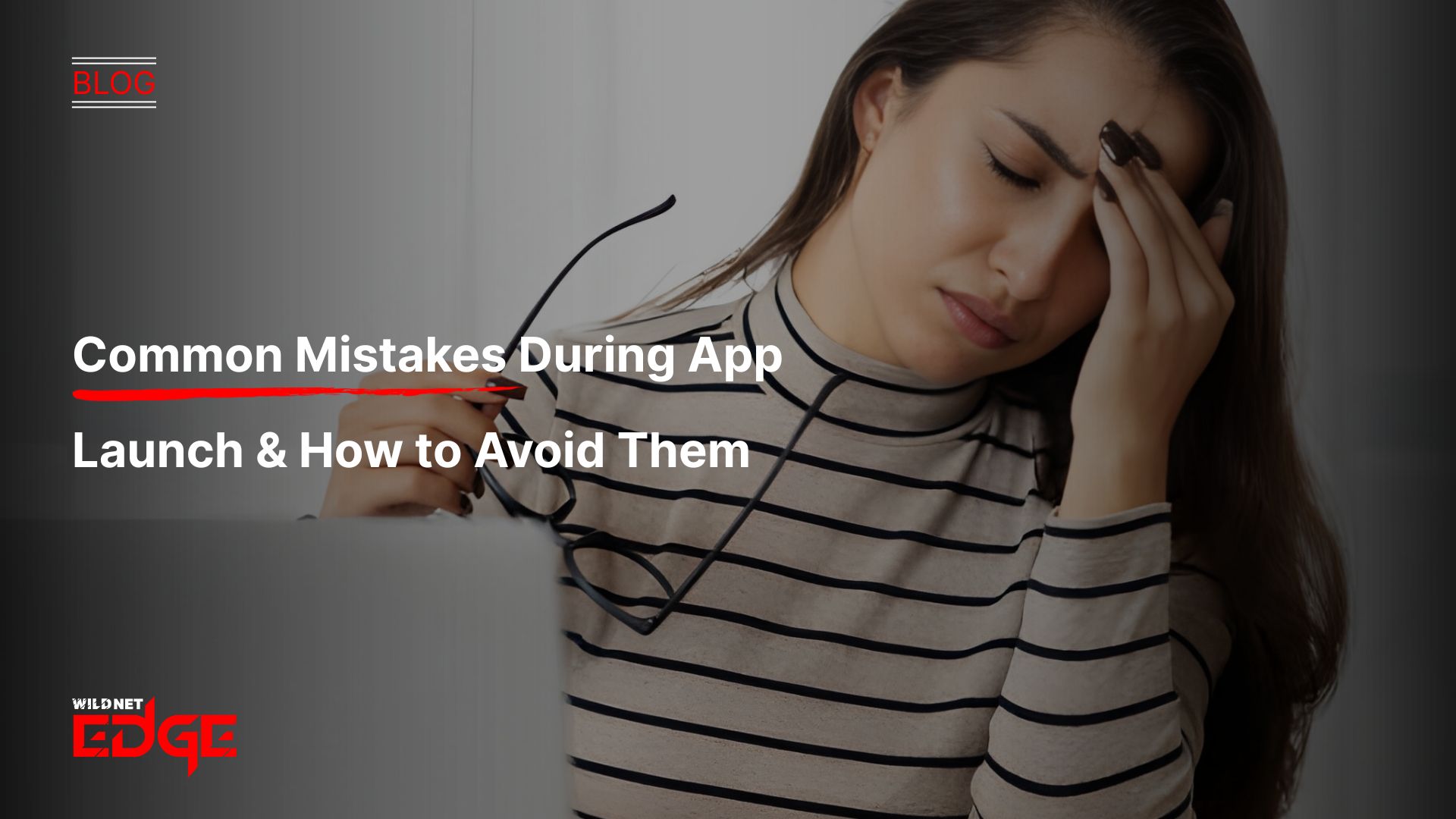TL;DR
This article details the most common app launch mistakes that can lead to a failed app launch. It explains that success requires a strategic plan, moving beyond just development. The guide provides an app launch checklist covering key pitfalls, such as insufficient testing, neglecting market validation, poor marketing, and failing to plan for scalability. It emphasizes that a lack of app readiness in these areas is a primary cause of failure. By avoiding these common errors, businesses can significantly improve their chances of a successful and sustainable launch.
Launching an app feels like sending your kid off to college; you’ve done all you can, but now it has to make it in the real world. That giddy mix of hope and anxiety can make you miss the obvious, where app launch mistakes creep in. We’re not talking about minor typos; we’re talking about the big, avoidable blunders like spending all your money on development and leaving none for marketing, or worse, releasing an app with a crippling bug because you rushed the final review. A great app that fails at launch is often a failure of strategy and focus, not code, and recognizing these common human errors is the crucial first step to ensuring your app gets the attention it deserves.
Why Most Failed App Launch Stories Start Before Launch Day
When an app launch fails, the blame is often placed on the launch day itself. The reality is that most app launch mistakes are made months earlier, during the planning phase. A failed app launch is almost always a failure of strategy. It stems from a poor mobile app development process or a fundamental lack of app readiness. A comprehensive app launch checklist is not just a list of tasks for the final day; it’s a strategic roadmap that starts at the concept stage.
The Top 7 App Launch Mistakes and How to Avoid Them
By understanding these common pitfalls, you can create a launch strategy that anticipates challenges and ensures a smooth rollout.
1. Skipping or Rushing the Testing Phase
- This is the main mistake and, at the same time, the most critical one that is very common when launching an app. The quickest way to get a large number of 1-star reviews and ruin your brand reputation forever is to release an app full of bugs and crashes or one that runs very slowly. Buggy software is simply not acceptable to users.
- Solution: A strict app testing phase should be implemented. This will consist of automated unit testing, integration testing, and, most importantly, manual Quality Assurance (QA) on various real devices (both for iOS and Android). A closed or open beta test with real users is extremely useful for discovering issues that occur in real-world situations.
A proper mobile app development process has quality gates built in from the very beginning, not just at the end.
2. Building Without Market Validation
This is a fundamental strategic error. You spend a year and a significant budget building a complex app with dozens of features, only to launch and discover that nobody wanted or needed your core solution. This is a common reason for a failed app launch.
- Solution: Start with a Minimum Viable Product (MVP). Build only the absolute core features necessary to solve one specific problem for one specific audience. Launch this lean version to validate your core hypothesis. This data-driven approach de-risks your full product launch and ensures you’re building something the market actually wants.
3. Neglecting a Pre-Launch Marketing Strategy
The “if you build it, they will come” philosophy is a myth. The release of a successful app is expertly planned like a marketing event. An app that has failed to gain users is often just a non-event, where not a single person was aware of its existence.
- Solution: Commence your launch marketing three to six months prior to the launch. Create a simple “coming soon” webpage to collect email addresses. Post updates about your development on social media. Connect with and become active in the online communities and influencers’ circles. Have an audience before the product is ready so that you can have a queue of users waiting for you on the first day.
4. Ignoring App Store Optimization
You’ve built a great app, but it’s invisible in the app stores. This is a critical app launch mistakes. ASO is the SEO for the Apple App Store and Google Play Store. Without it, users searching for your solution will find your competitors instead.
- Solution: This must be on your app launch checklist. Research your keywords. Optimize your app title, subtitle, and keyword fields. Create high-quality, persuasive screenshots and a video preview. Write a compelling description that focuses on user benefits, not just features.
5. Having No Plan for Server Scalability
This is the “success is failure” scenario. Your launch is too good. Your marketing campaign goes viral, 100,000 users try to sign up at once, and your entire backend infrastructure crashes. The result? 1-star reviews flood in, and your moment is lost.
- Solution: Your app readiness plan must include a scalable backend. Use scalable cloud solutions (AWS, Azure, GCP) with auto-scaling configurations. Load test your application before you launch. Simulate a massive traffic spike to see what breaks. An app scaling plan is not optional; it’s a prerequisite for success.
6. A Poor or Confusing Onboarding Experience
A user downloads your app, opens it, and is met with a confusing 10-step sign-up form or a blank screen. They don’t understand the value, and they delete the app within 60 seconds. This is one of the most silent but deadly app launch mistakes.
- Solution: Design your onboarding flow to deliver the “aha!” moment (the moment the user understands the app’s value) as fast as possible. Keep sign-up forms minimal. Use interactive tooltips or a simple guided tour to highlight the one or two key actions they need to take to get started.
You can even use modern AI Virtual Assistants to create an interactive, conversational onboarding experience that guides users 24/7.
7. Having No Post-Launch Feedback Loop
You launch the app… and then what? You have no analytics installed, no easy way for users to report bugs, and no plan to monitor reviews. The launch is not the end; it’s the beginning of the feedback loop. Ignoring this is a critical app launch mistakes.
- Solution: Integrate powerful analytics tools (like Firebase, Mixpanel, or Amplitude) before you launch. Implement an easy in-app feedback tool. Actively monitor your app store reviews and social media mentions. This data is the lifeblood of your product’s iteration and future success.
Our Technology Stack for Launch Readiness
A successful launch requires a modern stack for both the app and its monitoring.
- App Analytics: Firebase Analytics, Mixpanel, Amplitude, Datadog
- Performance/Crash Monitoring: Firebase Crashlytics, Sentry, Instabug
- Beta Testing & Distribution: TestFlight (iOS), Google Play Console (Closed Tracks), Firebase App Distribution
- Scalable Backend: AWS (with Auto Scaling), Google Cloud (with App Engine), Azure
- DevOps (CI/CD): Jenkins, GitLab CI, Bitrise (for mobile)
Conclusion
The first step towards having a successful app debut is to avoid these common mistakes in app launch. An app that is successful is not a one-time event but the result of the comprehensive and strategic app release plan that starts with market validation, continues through giving the highest quality via testing, and culminates in building a scalable foundation. When you make sure your app is ready, you are not just offering a product; you are offering a business that is here to stay.
Ready to navigate this complex journey? At Wildnet Edge, our AI-first approach is embedded in our entire mobile app development process. We partner with you to build, test, and launch apps that are not just built right, but launched right, avoiding the common pitfalls that lead to a failed app launch.
FAQs
The most catastrophic app launch mistakes is insufficient testing. A buggy, crashing app on day one is almost impossible to recover from. First impressions are everything, and 1-star reviews are permanent. This signals a total lack of app readiness.
You should start your launch marketing at least 3-6 months before your target launch date. This gives you time to build a “coming soon” landing page, capture emails, build a social media following, and start building relationships with press or influencers.
Both are common, but the most tragic failed app launch is a great product with no marketing. If you build a fantastic app and no one knows it exists, it will fail. A “bad” (MVP) product with great marketing and a strong feedback loop, however, can iterate and succeed.
Your final app readiness checklist should include:
1. Final QA and bug bash complete.
2. Analytics and crash reporting tools are integrated and working.
3. Server infrastructure is in place and has been load-tested.
4. App Store listings (screenshots, description, keywords) are finalized.
5. A customer support plan is in place.
Use load testing tools (like k6, JMeter, or cloud-based services) to simulate a massive, sudden influx of users. This helps you find your backend’s breaking point, identify database bottlenecks, and ensure your auto-scaling rules are configured correctly before real users experience a crash.
Your app has about 3-7 days to prove its value before a user churns. The onboarding flow is your only chance to make that value clear. If it’s confusing, long, or buggy, the user will never get to the “aha!” moment and will delete the app.
The first step is to work backward from your launch date. Define all the key milestones for Product, Marketing, and Operations. Your app launch checklist should not be a single list, but a comprehensive project plan with clear deadlines and owners for each stream.

Nitin Agarwal is a veteran in custom software development. He is fascinated by how software can turn ideas into real-world solutions. With extensive experience designing scalable and efficient systems, he focuses on creating software that delivers tangible results. Nitin enjoys exploring emerging technologies, taking on challenging projects, and mentoring teams to bring ideas to life. He believes that good software is not just about code; it’s about understanding problems and creating value for users. For him, great software combines thoughtful design, clever engineering, and a clear understanding of the problems it’s meant to solve.
 sales@wildnetedge.com
sales@wildnetedge.com +1 (212) 901 8616
+1 (212) 901 8616 +1 (437) 225-7733
+1 (437) 225-7733































